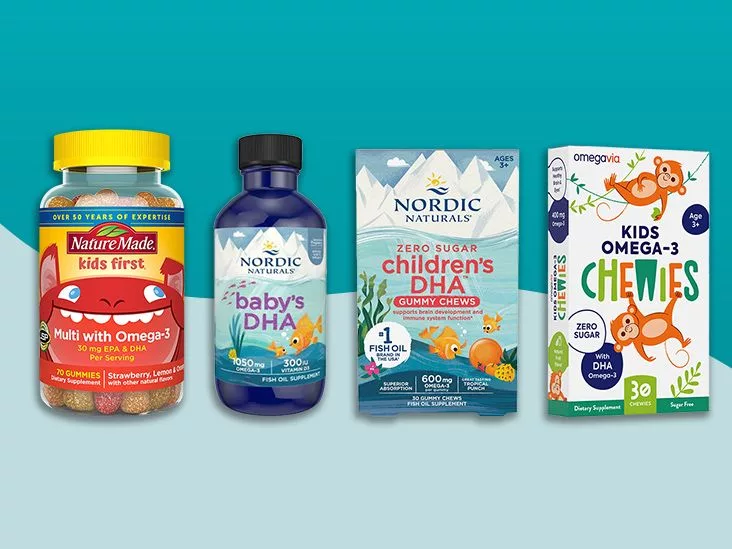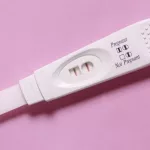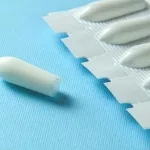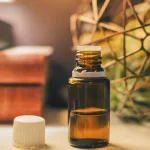Hey there, fellow parent! If you’ve ever watched your little one turn up his nose at broccoli and then complained about “head‑fog” at school, you might wonder if something’s missing from his plate. The answer could be as simple (and as tiny) as a drop of fish oil.
In the next few minutes we’ll walk through why omega‑3s matter, when a supplement makes sense, how to choose a safe product, and the exact dose that keeps your child thriving. Think of this as a friendly chat over a cup of tea—straight‑to‑the‑point, full of practical tips, and sprinkled with a little science for good measure.
Why Kids Need a Boost
What are EPA and DHA?
EPA (eicosapentaenoic acid) and DHA (docosahexaenoic acid) are the two star omega‑3 fatty acids found in fish oil. While your body can make a tiny amount of EPA/DHA from plant‑based ALA (alpha‑linolenic acid), the conversion is so inefficient that it’s like trying to fill a swimming pool with a garden hose.
Think of DHA as the “brain builder” and EPA as the “calm‑keeper.” DHA makes up about 60 % of the gray matter in a child’s brain, while EPA helps keep inflammation in check and supports a steady mood.
Which health areas do EPA/DHA support?
Research (including a 2025 roundup from Healthline) shows that adequate EPA/DHA can:
- Boost brain development, attention, and learning.
- Improve visual acuity because DHA is a major component of the retina.
- Strengthen the immune system and reduce the severity of asthma attacks.
- Help regulate mood, easing anxiety and occasional irritability.
- Support heart health by lowering triglycerides and blood pressure.
When is a supplement actually needed?
Most kids can hit their omega‑3 targets by eating salmon, sardines, or fortified eggs a few times a week. But here’s a common scenario:
- Picky eaters who refuse fish or fortified foods.
- Vegetarian/vegan families where EPA/DHA sources are scarce.
- Low‑income households where fresh seafood is a luxury.
- Kids with higher needs—think ADHD, asthma, or frequent colds.
If any of the above sound familiar, a pediatric fish oil supplement could be a smart safety net.
Benefits & Risks
Proven benefits for children
Let’s put the buzz into numbers. A review of 16 studies published in Pediatrics found that children who took 1,300 mg of combined EPA/DHA daily showed measurable improvements in memory, attention, and impulse control. Another trial with 29 asthmatic kids reported fewer flare‑ups after a 10‑month fish‑oil regimen.
Even sleep gets a lift—one small study observed that kids who added a daily DHA gummy fell asleep 30 minutes faster and slept more soundly.
Potential side effects & safety concerns
Fish oil is generally safe, but a few things can bite back:
- Transient fishy after‑taste or mild stomach upset.
- Excessive vitamin A/D in cod‑liver oil, which could be harmful for very young children.
- Contaminants (mercury, PCBs) if the product isn’t third‑party tested.
According to the Bambini Pediatrics FAQ, a reliable brand will proudly display “IFOS‑certified” or “USP‑verified” and have a clear “no added sugar” statement.
Balancing benefits and risks
Here’s a quick checklist you can run through:
- Does your child eat fish at least twice a week? If not, move to step 2.
- Is the product third‑party tested for purity? Yes = go ahead.
- Does the label list only EPA, DHA, and maybe a tiny bit of vitamin D? If the list is longer than five ingredients, look elsewhere.
- Any known allergies to fish or shellfish? Talk to your pediatrician before starting.
Choosing the Right Supplement
Forms: liquid, gummies, softgels
Each format has its fan club:
- Liquids are perfect for toddlers—you can stir a few drops into a smoothie or oatmeal.
- Gummies win the “taste test” battle, but watch out for added sugars.
- Softgels are convenient for school‑age kids who can swallow pills.
My neighbor Maya swears by the liquid for her 2‑year‑old because she can hide it in a spoonful of applesauce—no drama, no “yuck.”
What to look for on the label
| Key Element | Why It Matters |
|---|---|
| DHA ≥ 200 mg per serving (ages 2‑5) | Essential for brain & eye development. |
| EPA ≥ 100 mg per serving | Supports mood and reduces inflammation. |
| Third‑party testing (IFOS, NSF, USP) | Guarantees purity, no mercury. |
| Low added sugar & no artificial colors | Prevents dental issues and unnecessary calories. |
| Clear dosage instructions | Makes it easy to give the right amount. |
Fish‑derived vs. algae‑derived
If your family follows a plant‑based lifestyle, algae oil is a solid alternative. It provides the same DHA/EPA profile without the “fishy” smell and tends to have a lower risk of heavy‑metal contamination. The trade‑off? It’s a bit pricier, but many parents say the peace of mind is worth it.
Top 5 dietitian‑approved picks (2025)
Based on my own experience as a pediatric dietitian and the latest third‑party lab reports, here are five products that consistently pass the “trust test”:
- Nordic Kids Liquid DHA – IFOS‑certified, 300 mg DHA per tsp, no added sugar.
- SmartyPants Kids Gummy Omega‑3 – 120 mg DHA/EPA combined, natural fruit flavor, vegan‑friendly.
- Child’s Choice Softgel – 250 mg EPA+DHA, easy to swallow, made from wild‑caught sardines.
- AlgaHealth Kids DHA – 200 mg DHA from algae, sustainable, kosher certified.
- Cod Liver Oil Kids Blend – Adds vitamins A & D for winter months; great for bone health.
All of these have been independently tested, so you can feel confident you’re not giving your child a mystery cocktail.
Dosage Guidelines
Evidence‑based daily EPA + DHA ranges
According to a 2024 review by Nordic Naturals:
- Children 1‑8 years: 100 – 1,500 mg combined EPA/DHA per day.
- Children 9‑13 years: 100 – 2,000 mg combined EPA/DHA per day.
Those are wide ranges because needs differ based on diet, weight, and health goals.
Calculating dose by weight
A simple rule of thumb used by many clinicians is 20‑30 mg DHA per kilogram of body weight. Let’s do a quick example:
Emily is 4 years old, weighs 30 lb (≈ 13.6 kg). Multiplying by 25 mg DHA/kg gives about 340 mg DHA per day. A supplement providing 200 mg DHA + 100 mg EPA per serving would be a good fit—just give her a little over one serving.
Practical tips for daily use
- Use a calibrated dropper for liquids; a few drops go a long way.
- Split gummies into two doses if you’re worried about sugar spikes.
- Store opened bottles in the fridge—once you smell a “rotten fish” odor, toss it (Bambini’s FAQ).
- Set a daily reminder on your phone so you don’t forget the evening dose.
When to tweak or stop?
If your child experiences persistent stomach upset, reduces appetite significantly, or you notice a dramatic change in blood clotting (rare, but possible with very high EPA), pause the supplement and discuss with your pediatrician. Also, once your child regularly eats two servings of oily fish a week, you might be able to lower the supplement dose.
When to Talk to a Pediatrician
Supplements aren’t a free‑for‑all. Here are red‑flag situations where a medical opinion is a must:
- Your child is on prescription blood thinners or anti‑inflammatory meds.
- There’s a family history of bleeding disorders.
- Your child has a diagnosed allergy to fish or shellfish.
- You plan to give a cod‑liver oil that contains added vitamins A/D.
- You want a blood test to measure DHA levels (some pediatric clinics offer this).
When you schedule the visit, bring the supplement bottle and a list of any other vitamins or medicines your child takes. A simple script you can use: “I’m considering a fish‑oil supplement for my 5‑year‑old because he’s a picky eater. Can we discuss the appropriate type and dose?”
Quick Reference Table
| Age | Recommended EPA + DHA (mg/day) | Typical Form | Example Product (Dietitian Pick) |
|---|---|---|---|
| 1‑3 years | 100‑300 | Liquid drops | Nordic Kids Liquid DHA |
| 4‑8 years | 300‑600 | Gummies | SmartyPants Kids Gummy Omega‑3 |
| 9‑13 years | 600‑1,500 | Softgels | Child’s Choice Softgel |
All amounts are based on the combined EPA + DHA content and assume a diet low in fish. Adjust upward if your child’s intake is already decent.
Wrapping It Up
Here’s the bottom line: most children can meet their omega‑3 needs through a balanced diet, but the reality of picky eaters, busy families, and specific health concerns means fish‑oil supplements often serve as a helpful safety net. Choose a product that’s pure, appropriately dosed, and fits your child’s taste preferences, and always keep the conversation open with your pediatrician.
Now that you’ve got the scoop, I’d love to hear from you. Have you tried a fish‑oil supplement for your little one? What brand worked (or didn’t work) for you? Drop a comment below or share your experience in our community forum. If you have any lingering questions, feel free to ask—I’m here to help!


















Leave a Reply
You must be logged in to post a comment.